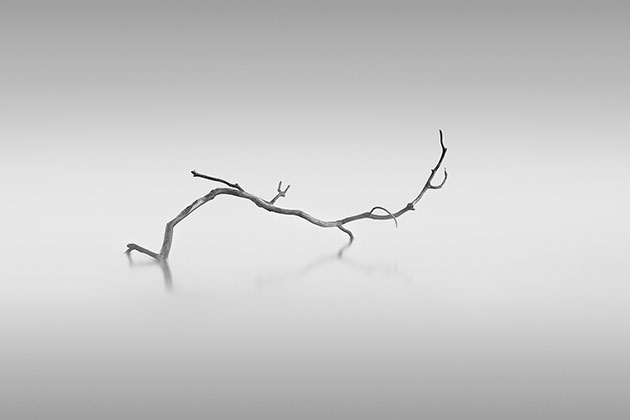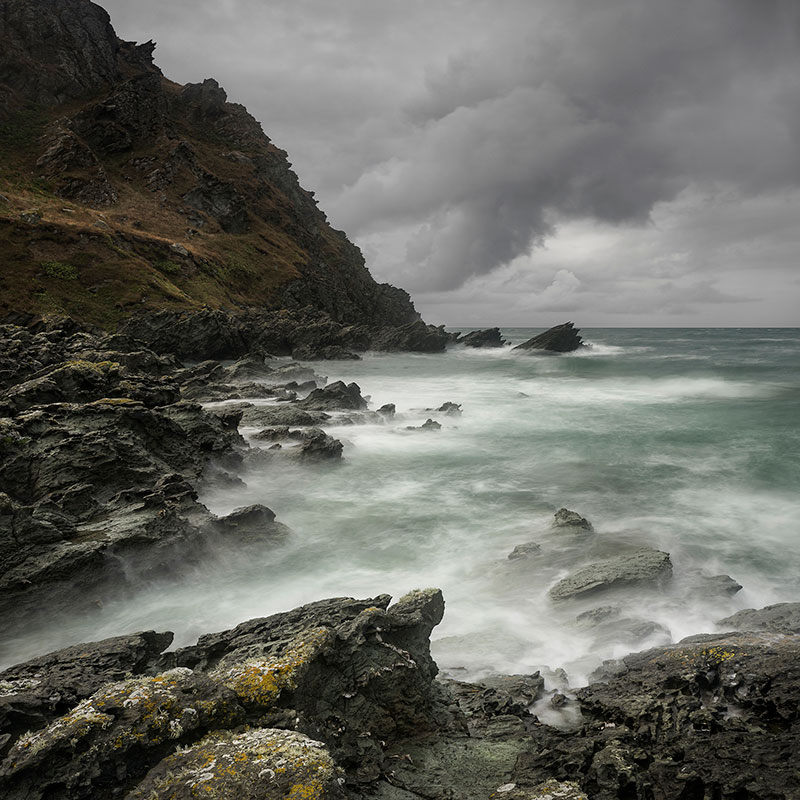
Neil often heads for this rugged stretch of coast in the South Hams when it’s stormy. Nikon D810, 24-70mm, 3sec at f/11, ISO 64, 2-stop ND filter. Credit: Neil Burnell
How did you get started in photography?
Neil Burnell: It started four or five years ago, and was o the back of my other hobby – fishing. I used to fish a lot on the coast around where I live in Brixham, Devon, and I bought a camera to take pictures of my fishing friends and the local scenery. It’s fantastic to be out fishing early in the morning, and that’s when I realised I should be taking pictures of what I was seeing.
After a while, the photography took over, and I hardly ever go out with my rods any more. I’m self- taught: I bought a tripod and a set of filters, and learned by studying others’ work and styles – paying particular attention to seascapes.
You’re a graphic designer by trade. How has this informed your photography?
NB: It has certainly helped, and my graphic design style is also quite minimal, so that’s played a part in my photography. Going back 25 years or so, I did take a photography course while I was at college, but it was secondary to design. At the time, I was into sports – particularly football – so I didn’t have any spare time to pursue photography. I retired from playing on a local level a few years back, so had more time. As you might have guessed, I tend to throw myself into my hobbies!
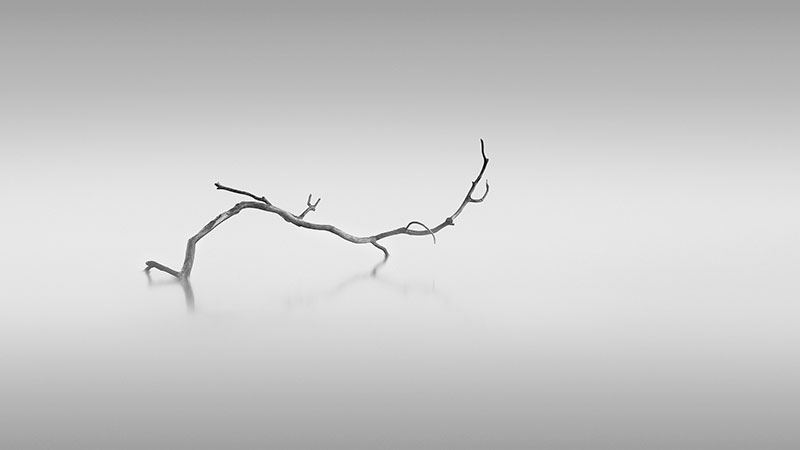
His first attempt at a minimal long-exposure, this is still one of Neil’s favourite images. Nikon D810, 21mm, 126sec at f/8, ISO 100, 10-stop ND filter. Credit: Neil Burnell
Did you have a turning point with your photography?
NB: It was when I started to study long-exposure photography more closely. The first photograph I took that I was really pleased with is a minimal image of a stick in the mud in a local river. It was misty and there was no background – and that sort of minimal, monochrome style is something I really like.
You take competitions pretty seriously. Tell us a bit more about this.
NB: I entered APOY last year, and was about eighth in the final standings. Then, last year and the year before, I won the Wex Photographer of the Year award. Also last year, I won the Your View category in the Landscape Photographer of the Year with a minimal beach hut scene. As far as APOY is concerned, I worked very hard at it, and doing as well as I possibly could was my main aim at the start of 2018.
I’m quite a competitive person – I know I shouldn’t be! With the Wex competition, because it’s weekly, once I got to the stage where I was doing well, it motivated me to go out and take more photographs. Generally, because I work full-time, I can only go out shooting at weekends, so during the week you can be planning and thinking about what you can do. It definitely motivates you to do more.
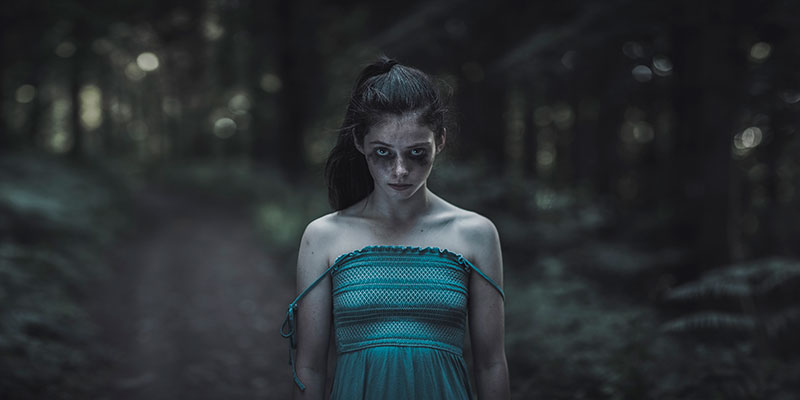
This unusual stitched panorama of his daughter Anya scored highly in the portrait round. Nikon D810, 100mm, 1/80sec at f/2, ISO 100. Credit: Neil Burnell
What was different about APOY, and how did you plan your year?
NB: I’ve done a lot of photography I wouldn’t normally – such as portraiture. So having so many different categories and genres has really pushed me, and it’s the sort of thing that can only improve your photography as a whole.
As each round was announced, about a month before each deadline I’d start to think about what I could shoot to enter into it. This sort of planning helped particularly with the portrait round, and I actually took a day off work to go out with my daughter to shoot something cinematic and stylish – something a bit more eye-catching than the norm. It was a longer-lens panoramic shot – and my Zeiss lens renders bokeh so nicely, I knew I’d get a creamy effect in the background. I then applied a split tone in processing. Photography is all about mood and light, and I can definitely take what I learned from the portrait shoot into woodland photography and the landscape.
Of course, there are some rounds where you know you have a suitable shot already. I do a lot of landscape, so I knew which shots would go into those rounds. But when it came to the macro category, I spent pretty much every weekend for a month going out and shooting images so I had something to enter.
I view it as a year-long project. It got me out and motivated, so I enjoyed myself whatever the outcome. If I didn’t have these projects and competitions I’d end up not going out half the time.
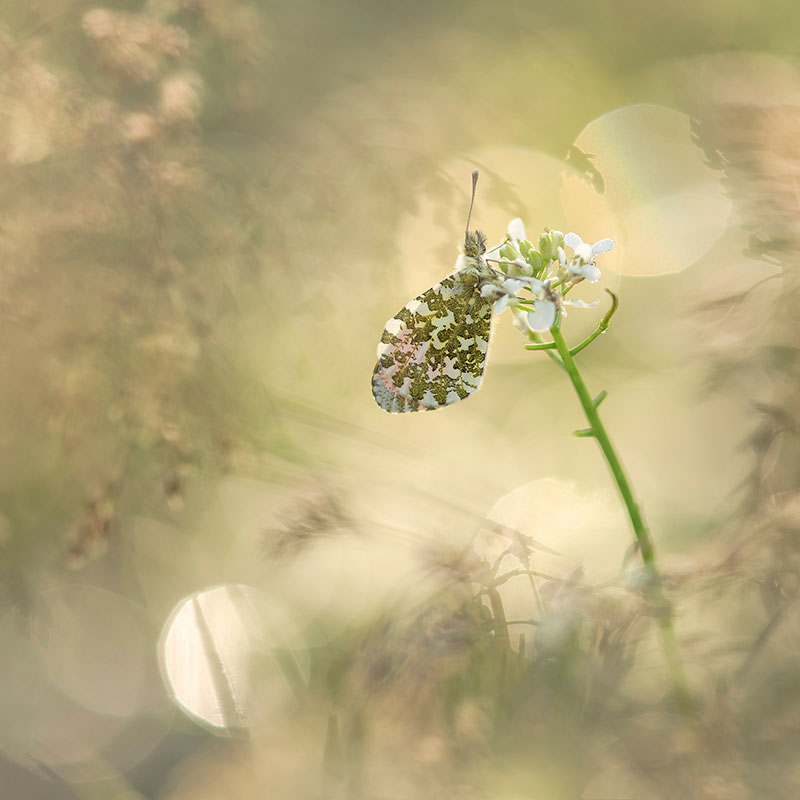
Neil captured this orange-tip butterfly early in the morning, using a shallow depth of field for attractive bokeh. Nikon D810, 100mm, 1/160sec at f/2.8, ISO 64. Credit: Neil Burnell
How did you learn post-production?
NB: I’m self-taught. Years ago, I had a one-to-one Photoshop session as part of my job at the time, and that taught me the basics. I’ve learned a great deal from YouTube videos. If I have a spare moment and want to learn how to process an image in a certain way, I’ll watch countless videos to learn how. I don’t follow anyone in particular – I just do a search and watch the highest-rated ones. Some YouTubers can make them very complicated, so I look for ones that are easy to follow. I always have something in mind when I’m learning and try not to take on too much information in one go.
I’ve also started watching more landscape videos – not with the aim to learn anything in particular, but for enjoyment as much as anything and to see the locations.
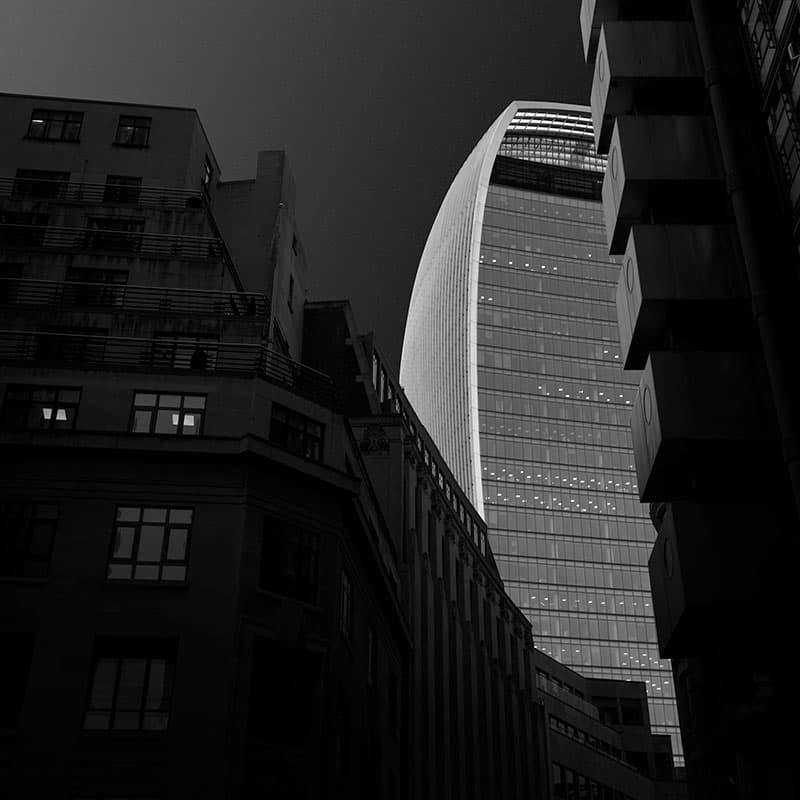
An admirer of b&w city photography, he tried it himself on a trip to London. Nikon D810, 15-30mm, 1/100sec at f/10, ISO 64. Credit: Neil Burnell
And what about equipment?
NB: I started off with Canon, but my brother-in-law had a Nikon and I liked the look of it more. My first camera was a D7000; then I changed to the D810, which I used for four years. More recently, I’ve upgraded to the D850, the main reason being because I’ve suffered with quite a bad back this year – mainly because of doing macro. The tilt screen on the D850 means I don’t have to mess my back up again. There isn’t a great difference in image quality, but I’ll definitely notice the difference physically when I come to do macro again.
As for lenses, I chop and change them a fair bit. They range from a Zeiss 21mm to a Nikkor 17-30mm f/2.8 for landscapes, and a Zeiss 100mm macro for close-up and portraits. It tends to be the same few that come out with me.
Do you plan to keep photography as a hobby?
NB: It’s so difficult to become a professional unless you’re willing to do stuff like weddings. For me, that would ruin my enjoyment of the hobby I love. One avenue into becoming a professional is YouTube, but I wouldn’t be comfortable with that. It’s such a hard thing to make money at – the landscape side, particularly. In a way, I’m making an income of sorts from the prizes I’ve won, and I sell the odd print – certainly not enough to make a living from, but that’s fine.
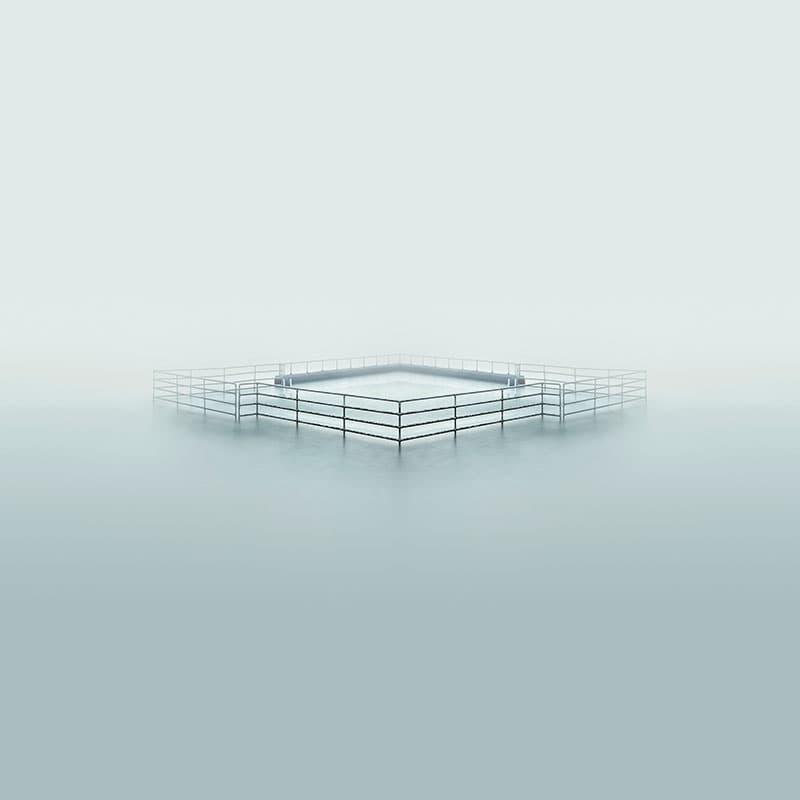
Our APOY winner describes himself as ‘addicted to long-exposure photography’. Nikon D810, 35mm, 77sec at f/14, ISO 100, 10-stop ND filter. Credit: Neil Burnell
What advice would you give to someone thinking of entering APOY this year?
NB: Put some ideas together in advance, even if it’s on paper, and be prepared for each round. Don’t leave it until the last minute. Put in the effort and research, and think about what you’re going to do.
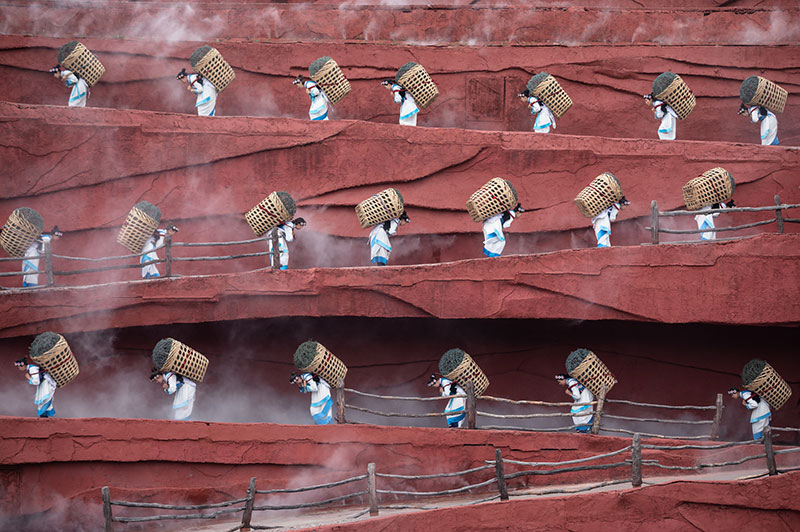
Marco’s winning image from Travellers’ Tales. Canon EOS 5D Mark IV, 70-200mm, 1/400sec at f/4, ISO 200. Credit: Marco Tagliarino
2nd place – Marco Tagliarino
Travel photography is Marco’s speciality, and his ability to condense the atmosphere of a place into a single frame is admirable. He was a clear winner in our Travellers’ Tales category, with a shot that was intriguing, cleverly composed and demanded careful study. He consistently produces images that convey a sense of scale, and his candid people photography manages to get in close without him being spotted – a skill most street photographers would be proud to possess.
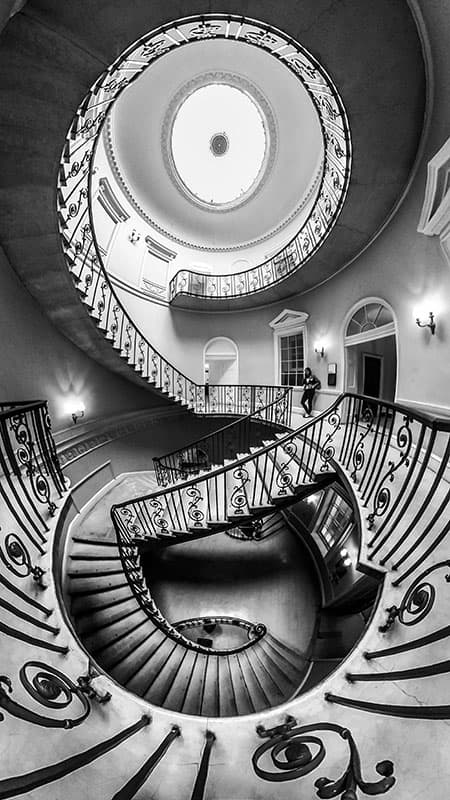
Credit: Simon Hadleigh-Sparks
3rd place – Simon Hadleigh-Sparks
There are many possible ways to describe Simon’s work, but somewhere near the top would have to be the word ‘slick’. His excellent post- production skills ensured images that were clean and sharp – as well as imaginative and well executed – time after time. This entry to our Mono Culture round is a case in point. Achieving sixth place and 26 points, it was shot with a Ricoh Thea V – a 360° camera that would be very easy to use badly, but not in Simon’s hands.
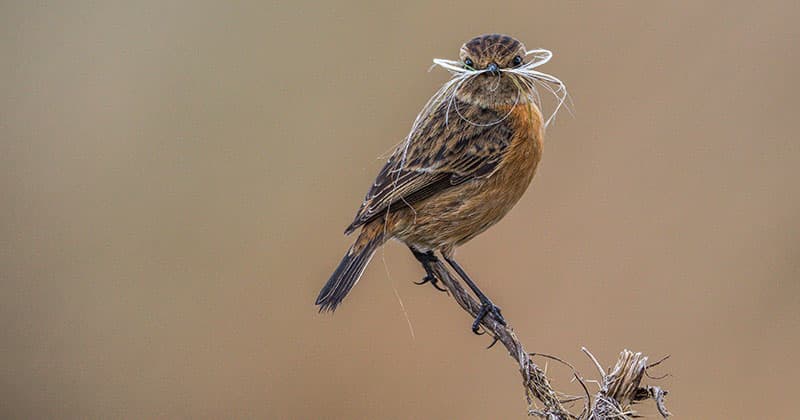
This characterful little bird was beautifully captured. Canon EOS-1D X, 400mm + 2x converter, 1/1600sec at f/5.6, ISO 2000. Credit: Richard Whitson
4th place – Richard Whitson
Like all the high-scoring entrants, Richard showed great versatility in his photography. His animal imagery – particularly the shot from Fur and Feathers, shown here, and his close-up of a frog from the Close Encounters round – demonstrates an enviable ability to combine superb technique with wit and keen observation. He also has pretty impressive reflexes, as his images of adrenaline-fuelled surfers riding the storms in the seas off Tiree demonstrate.

